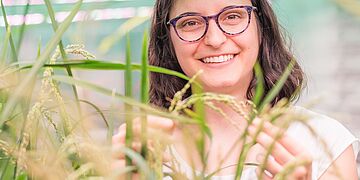SARSeq: Next Generation Sequencing

A key to handling future pandemics may lie in the simultaneous analysis of samples from thousands of individuals for different pathogens. Scientists from the Vienna BioCenter used Next Generation Sequencing (NGS) to accomplish this and adapted this technique in an approach they called “SARseq” to monitor SARS-CoV-2 mutant strains in Austria.
Early on during the current pandemic, Ulrich Elling of IMBA started thinking of ways to scale up testing for SARS-CoV-2 with the help of robotics and combinatorial primer use – an approach he had previously used to genotype 150,000 cell lines for Haplobank. The project took off when he was joined by IMP-Group Leader Luisa Cochella, whose experience in handling RNA was crucial for solving the task.
In March 2020, the first experiments were carried out with the help of Ramesh Yelagandula, a postdoc from the lab of Julius Brennecke. Initial protocols were borrowed from single cell sequencing pipelines, many of them developed by Alex Vogt of VBCF. It was obvious that a high-throughput testing-method had to rely on self-sampling, so gargling rather than swabbing was the method of choice right from the start. The other bottleneck that had to be avoided was RNA purification. A quick extract protocol published by Feng Zhang in Boston and later the HUDSON protocol - both suggested by Max Kellner - were able to do the trick.
After two months of test-runs, drawbacks, adjustments, and a lot of frustration, everything finally fell into place when a pilot-project for Austria’s school testing initiative was carried out and the positive cases were clearly identified. The pipeline was now able to run 36,000 patient samples at a time and to identify not only infections with SARC-CoV-2 but also several strains of influenza and rhinovirus. It takes advantage of the Next Generation Sequencing (NGS) technology, the same used to sequence the human genome. NGS machines can sequence millions of base pairs of DNA in a single run.
In the current protocol, individual patient samples are collected, viral RNA is converted to DNA, and then PCR amplified, similar to the principle of current PCR tests. During this amplification, DNA barcodes, which are specific to a single sample, are added to any viral DNA that is amplified. Tens of thousands of samples are then mixed together and sequenced on an NGS machine. The presence of viral genetic material indicates a positive result, and the barcodes added in the PCR step conclusively identify the positive sample that contained the viral material. To cope with the enormous amount of data generated, a sophisticated script was developed by Alex Stark, a bioinformatician and Senior Scientist at the IMP.
The method, now dubbed SARSeq, was published on medRxiv in November 2020 and is freely available to all scientists. With the scientific problems solved, the only limitations now come from logistics problems that start with collecting the samples and include keeping up a supply chain for consumables that are in high demand all over the world.
As new and more infectious coronavirus-variants were seen in late 2020, Cochella and Elling started adapting SARSeq to be able to identify relevant mutations in the coronavirus genome rather than different viruses. Within a month, they had turned their detection method into a variant-sequencing method. The strategy is to sequence the 2,000 base part of the SARS-CoV-2 genome that corresponds to the spike of the virus, which is where it is acquiring the mutations that promote receptor-binding, and therefore infectivity.
Under an agreement with AGES, the Austrian Agency for Health and Food Safety, this high-throughput, low-cost screen is now one of the backbones of Austria’s testing and monitoring strategy. It can detect not only the known variants of concern but also new ones that carry mutations in the spike protein.
Key team members from IMBA and IMP who contributed to the development of SARseq, standing left to right: Ulrich Elling, Ramesh Yelagandula, Ezgi Özkan, Marcus Strobl, Alexander Stark, Luisa Cochella. Squatting left to right: Alexander Vogt, Aleksandr Bykov. Photo taken in late 2020; click to enlarge.
Further reading
News item on SARseq: "The testing technology of the future: 36,000 samples in one night", November 2020
Preprint: "SARSeq, a robust and highly multiplexed NGS assay for parallel detection of SARS-CoV2 and other respiratory infections". Yelagandula, R., et al., doi: https://doi.org/10.1101/2020.10.28.20217778




